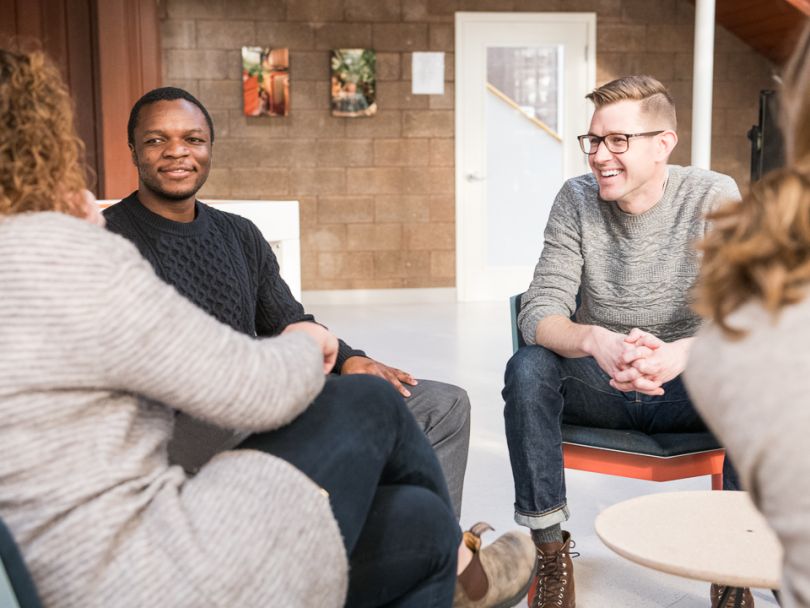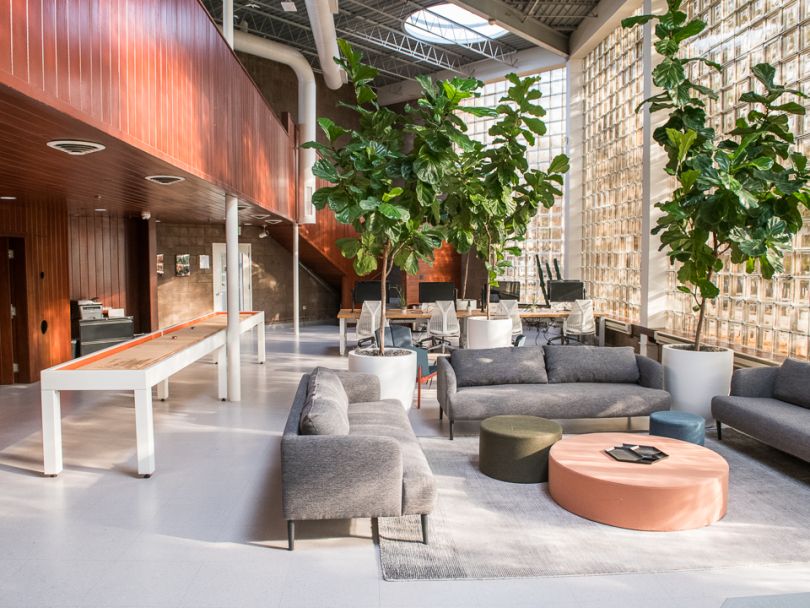Alex Quinn’s worst job interview began with an odd request: The hiring manager wanted him to code over the phone — in Java, specifically.
For the next few minutes, Quinn found himself searching for ways to describe how he would set variable X, where he’d place curly brackets and the ways he’d loop over an array. As he regurgitated nonsensical lines of code, his interviewer jostled around on a bus, making it hard for them to hear each other.
See how your employer brand is performing in AI tools like ChatGPT and Google.
Needless to say, Quinn did not take that job.
“I left that session being like, ‘What the heck just happened?’” said Quinn, who is now director of engineering at Wunder Capital.
Today, Quinn is the one doing the hiring at Wunder, and his aim is to make sure no engineering candidate goes through a similar experience. Instead of asking engineers oddball brain teasers, like, “How many manholes are there in the universe?” Quinn keeps it focused on the work. In fact, when he tells candidates about the straightforward process during their phone screener, they tend to relax, he said.
That’s by design. Those brainteasers may be propped up as a way to assess a person’s problem-solving ability, but, all too often, they become a proxy for the interviewer’s general assumptions.
Keeping the interview focused on practical, work-oriented problems eliminates one avenue for bias to creep in. Quinn believes that’s especially important for a company like his, which operates at the cross-section of financial and environmental tech as a commercial solar financing firm. Both industries have poor track records when it comes to diversity, according to Quinn.
The approach also sets a different tone for the interaction between interviewer and interviewee.
“It moves the conversation back to trying to find a good fit on both sides, rather than someone having to prove themselves as an engineer,” Quinn said.
Still, Quinn will be the first to admit that Wunder can still improve diversity on its tech team. While 50 percent of Wunder’s staff are women, all members of its five-person engineering team are men.
“When you create a culture early on and don’t have D&I as part of that culture, you’re not creating those expectations and behaviors.”
Wunder is far from alone in confronting its lack of diversity. In a Techstars Diversity and Inclusion Report that surveyed 680 startups, only 12 percent employed five or more tech workers belonging to underrepresented minority groups. Yet 72 percent said diversity was important to them.
While tech giants like Google and Amazon draw most of the attention around their diversity and inclusion initiatives, establishing a more diverse workforce doesn’t require a large budget or stocked talent pipeline. In fact, it’s critical for startup founders to start thinking about those efforts as early as possible, said Wayne Sutton, co-founder and CTO of the D&I consulting group Change Catalyst.
Diversity doesn’t just happen, he said; it needs to be intentional in everything the company does.
“When you create a culture early on and don’t have D&I as part of that culture, you’re not creating those expectations and behaviors,” Sutton said. “So when you come along and say, ‘We want to focus on diversity,’ you now have to change the mindset of 150 people.”
We spoke with Wunder, the Chicago-based edtech company PackBack and Tamr, a Boston-based data firm, about the steps they’re taking to build more diverse and inclusive teams.
Building a Diverse and Inclusive Startup
- Invest in internal diversity and inclusion efforts. Building a diverse team isn’t just about hiring diverse candidates — it’s about building a culture that celebrates and supports people from all backgrounds and identities.
- Expanding the hiring pipeline to include remote candidates can increase opportunities to recruit diverse candidates.
- Participate and invest in community efforts that support diversity in the tech industry.
- Keep interviews focused on the person’s ability to do the job. Brainteasers and irrelevant coding challenges can trigger impostor syndrome and increase bias in the evaluation process.
- Collect data on internal diversity numbers. Tamr compiles monthly reports on its diversity numbers to help evaluate progress and hold itself accountable.
Make diversity a priority from the start
If there’s one action startup founders can take to build a diverse team, it’s making it a priority from the onset, Sutton said. Most founders wait until their company is about 150 people to realize they have a diversity problem.
“It’s so hard to course correct once you go from 50 people to 150-300.”
By then, a culture has already been established and it becomes even more difficult to change the habits of everyone in the company. That’s because diversity and inclusion doesn’t start with recruitment — it starts with company leaders making it a part of the office culture and business goals, Sutton said.
“It’s so hard to course correct once you go from 50 people to 150-300,” Sutton said. “That seems to be the sweet spot for a company to contact a consultant.”

Recruiting diverse talent starts with internal measures
Tamr’s current diversity efforts started two years ago when an engineering intern formed a D&I committee to help figure out how the company could better support and recruit more employees from underrepresented minority groups. The company’s CEO championed the grassroots initiative and made diversity a priority led by executives on the people team.
The committee has since evolved into a diversity, equity and inclusion planning group that organizes diversity events and training around topics like implicit bias that all employees attend.
“If you haven’t fixed any issues internally, then no matter what external recruitment you’re going to do, it’s not going to stick.”
Those internal changes have been critical to improving Tamr’s recruiting efforts, said Katherine Bove, Tamr’s people operations lead. Diverse hiring efforts won’t matter as much if the company doesn’t create an environment where people of all backgrounds and identities can thrive and feel welcomed.
“If you haven’t fixed any issues internally, then no matter what external recruitment you’re going to do, it’s not going to stick,” Bove said. “It’s not going to make that systematic change that makes a company accessible and welcoming to everyone from all different backgrounds.”
Tamr has also started collecting monthly data on representation within its teams to hold itself accountable. The reports track the percentage of employees who are women, over 40 years old and who self-identify as people of color across each of Tamr’s teams. The numbers are then reported to the company’s CEO.
“It’s really important to ensure that you have some numbers to back up what you’re saying,” Bove said.
The data isn’t made publicly available, but it is something the company is exploring, Bove said. Still, Tamr has been able to use those reports to see which methods are working, and which aren’t. If they see a hiring manager has increased the number of women they’re hiring, they can check in with them and determine how the rest of the company can learn from them.
Since they started collecting data in 2018, the company has gone from having 25 percent representation each for women, people of color and people over 40 years old, to about 33 percent. The company’s goal is to have 50 percent representation for each underrepresented group.

Think about diversity in employee resources and benefits
Before any candidate is invited to an onsite interview at Wunder, they are informed during a phone call that there will be no salary negotiation.
That’s because every employee is paid the same based on their position. This has helped the company avoid wage gaps that can arise because men are more likely to negotiate their salaries than women, Quinn said.
“The expectation is that whatever salary that we’re gonna offer you at the end of this process is going to be the same across the same people on the same team.”
While a Harvard University Women and Public Policy study found that women will be more likely to negotiate if that option is made explicit during the hiring process, eliminating negotiations has helped Wunder signal equality across the company. It’s also helped them ensure that people are joining the team because they’re passionate about the environment and work.
“It allows us to hedge against people’s ability to negotiate, or their lack of enthusiasm to do so,” Quinn said. “The expectation is that whatever salary that we’re gonna offer you at the end of this process is going to be the same across the same people on the same team.”
Wunder also offers policies like flexible PTO and a parental leave policy (for mothers and fathers) that includes six weeks off the grid followed by an additional six weeks of remote work. There are also opportunities to join employee resource groups like Wunder Women to support the needs of people with different backgrounds. Those benefits and options are presented to candidates during the hiring process to avoid making candidates feel like they are asking for accommodations.
“As a candidate, you don’t have to bring up things like parental leave or that you have a newborn kid and it may be difficult for you to work full time,” Quinn said. “We’ve been transparent and expressed the way in which we’ve already got this solved for you.”
Establishing employee resource groups can also be a great way to create safe spaces inside the company and bring awareness to good and bad behavior inside the organization, Sutton added.

Expand the recruitment pipeline outside your network
One of the biggest challenges tech startups can face in building diverse teams is finding diverse technical candidates to fill their pipelines, but it would be a mistake to use that as an excuse for minimal diversity. Often, it just means the company needs to change how it recruits candidates.
Wunder is confronting this problem with its latest hiring push. Based in Boulder, a city whose population is 88 percent white, it hasn’t been enough to rely on the usual networks to find underrepresented candidates from underrepresented backgrounds. So, the company has opened up its job openings to remote hires.
It’s early in the hiring process, but Quinn said he has seen a more diverse field of applicants.
“We’re asking ourselves how we can keep diversity in mind in our hiring practices and be intentional about it, rather than just taking whoever applies.”
But those hiring efforts don’t always have to drastically transform how and where a team works. Sometimes, it can be as simple as promoting jobs in places where diverse candidates will see them. As PackBack looks to add five new hires to its product and engineering team, the company has made reaching out to diverse sources in Chicago a priority.
“With the team being small and this being an opportunity to set the future growth path for the engineering team, we’re asking ourselves how we can keep diversity in mind in our hiring practices and be intentional about it, rather than just taking whoever applies,” said Davo Hynds, who’s an engineering manager at PackBack.
Hynds said his team has posted job openings on several Chicago-based diversity-in-tech Slack groups, Meetups and organization pages and newsletters. He also makes sure they have his information to connect and ask any questions about the opening.
“Beyond just linking out on LinkedIn ... we’re looking for groups where we can source candidates who we may have otherwise missed,” Hynds said.
Tamr has also invested in several community outreach events to not only promote diversity in tech but also let candidates know that they support diverse employees. Those efforts have included partnerships with the Cambridge Rindge and Latin School to promote STEM, hosting networking events like Hack Diversity and participating in more diversity conferences.
Those investments are about making a long-term impact on the diversity of tech talent in Cambridge, Massachusetts, Bove said.
“We’re trying to help build networks with different organizations that are trying to make that change because that’s where the change is going to come from,” Bove said. “It’s going to come from students who are gaining access to the STEM fields, and who are getting them interested in giving them the support to continue in those STEM fields.”

Standardize the interview process
But what happens once those candidates come in for an interview? How do you ensure that you are accounting for unconscious bias and evaluating each person fairly?
PackBack recently debated these questions and decided to make a critical change to its interview process. The engineering team used to gather in a meeting a couple days after an interview and discuss what they thought about the candidate. As they reflected on those experiences, Hynds said they realized that the feedback mostly skewed negative and didn’t properly evaluate the candidate’s ability.
Now, the hiring manager has a brief conversation with each individual after they’ve submitted their evaluation form, asking about what they thought the candidate’s strengths and weaknesses were and whether they’d be a fit on the team.
Evaluations and interviews can be a festering ground for unconscious biases to creep in and influence who gets the job. If companies aren’t explicit about diversity and what they value in a candidate, it can lead to building a team of people who share similar backgrounds in the interest of “culture fit.”
Creating a structured interview process can keep the focus on the person’s work, standardize the evaluation process and mitigate bias. At Wunder, the candidate’s technical abilities and passion for the company’s mission are all that matters.
The process starts with a 15-minute screening call about the person’s experience solving a technical challenge — no video, to avoid unconscious bias, Quinn said — followed up with a 30-minute remote pairing session, and then an on-site interview that involves more pair programming and technical questions. The company eliminated the popular take-home test because it eliminates candidates who don’t have the privilege of time, Quinn said.
Creating a structured interview process can keep the focus on the person’s work, standardize the evaluation process and mitigate bias.
PackBack also removed the take-home coding exercise, which used to take candidates about two hours to complete. For a person who has children or works multiple jobs, that time commitment can be the difference between applying or not, said Jessica Tenuta, PackBack’s chief product officer.
Instead, they found that an in-depth 30-minute phone interview about the candidate’s experience solving technical challenges at their job proved more valuable than the take-home exercise. It gave them the baseline information they needed to evaluate a candidate and removed an additional barrier to apply.
Think about who’s doing the interviewing
When it comes to interviewing candidates at Tamr, Bove said the company tries to make sure the same engineers participate in the interview process for a role. Most of the time, this includes the head of engineering and at least one member from each engineering team.
She keeps an eye out for subjective terms that are often negatively associated with a particular gender, race or age, such as aggression, ego or the appearance of being slow, among others.
The participating interviewers are also trained on interviewing techniques and have participated in DEI training sessions. Keeping the interviewers and the questions they ask consistent can help ensure that each candidate is getting the same treatment, even as they need to hire quickly.
She also reviews evaluations for signs of implicit bias. She keeps an eye out for subjective terms that are often negatively associated with a particular gender, race or age, such as aggression, ego or the appearance of being slow, among others. However, Bove said it hasn’t been a problem so far.
Ultimately, Tamr’s interview process is about finding a person who is a culture “add” rather than a “fit.” The distinction may sound insignificant, but it reframes the hiring process around bringing someone on who offers a different experience or background to the company rather than someone who might be similar to everyone else.

Do what’s best for your organization
There is no one-size fits all solution for building a diverse and inclusive team environment, Sutton said. Each industry and company’s needs are different. However, establishing employee resource groups to create allyships, installing gender-neutral bathrooms and running workshops are good places to start.
Meanwhile, he said there are a few questions startup leaders should always be asking themselves as they grow their companies:
- Do I have the right people on my team to build for the future of a diverse global economy?
- Where am I sourcing my top hires from? Are they all sourced from the same hiring network or from a variety of sources?
- What does a truly diverse culture look like, and how am I holding myself and my executive team accountable for that?
To track success, Sutton said it’s important for leaders to understand how they measure culture, retention and attrition, and making that part of an honest conversation among team leaders and the staff.
“Those are signals connected to how you’re getting it right in terms of creating an inclusive culture,” Sutton said.
There’s no easy hack to building an inclusive team, Bove added. It requires talking about it as an issue, recognizing your shortcomings and doing the hard work of correcting for them.
“I don’t think anyone has truly figured out how you do that,” Bove said. “As a company of our size and current funding, we can only do so much. But with the money we do have, we have to make sure we’re using it in the right places and tracking to make sure our sourcing is good.”
“You can be committed to diversity all you want, but if your pipeline is only men, that’s not going to move the needle.”





